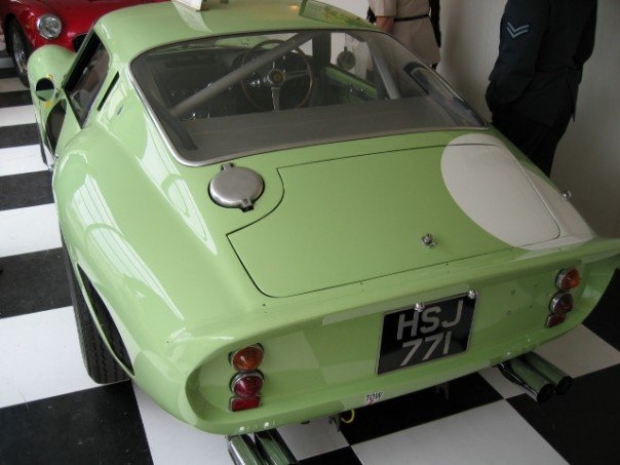What is it about the Ferrari 250GTO that makes people pay so much for them?
It has been widely reported that Ferrari 250GTO chassis number 3505GT was sold recently for $35m. In doing so, it became the most expensive car ever sold (that has been publicly confirmed, at least). I'm sure there are plenty of opinions on whether a car can ever be worth that much, but I would rather take a slightly different stance and consider why the GTO is so revered and attains such high prices.
Between 1962 and 1964 Ferrari built 36 250GTOs, plus three further cars fitted with 4.0 litre Superamerica engines which are nominally known as 330GTOs. Within that production there were two distinct body styles, with seven examples receiving the so called 250GTO 64 body style. There was also one example built with a body that resembled the road-going 250 Lusso. GTOs were all handbuilt, and almost all the cars have features that make each car unique.
Of course the GTO has become iconic for its intended purpose as a race car in the GT classes in the early Sixties, but obviously some examples have a greater history than others. 3505GT was manufactured fairly early in the GTO's production run for the UDT Laystall team, and was finished in the distinctive pale green colour the team raced with. Originally it was intended to be raced by Stirling Moss but his career-ending crash at Goodwood resulted in driving duties primarily being handed over to Innes Ireland. Its first season was spent mainly racing in the UK where it racked up a fair amount of success, most notably with a win in the Goodwood Tourist Trophy, although that win was rather inherited as John Surtees was taken out of the lead in a sister GTO when Jim Clark lost control of the Aston DB4GT Zagato just as Surtees was lapping him. The only international foray for the car was the 24 Hours of Le Mans where the car retired with a failure of the dynamo. The following year it was sold off to a Gunther Phillip in Austria were it was raced with considerable success in local events, the highlight being a first overall at the GT support race to the Austrian Grand Prix. The car has no further noted competition history after 1963, and has passed through a succession of owners around the world prior to its latest acquisition by an American collector.

On that face of it, the car has a very good but not outstanding competition history, and there are many other cars with superior racing provenance, with successes at blue riband events such as Le Mans or the Mille Miglia, that don't attain the GTO's prices. By way of comparison, examples of the the Jaguar D Type, a car which won Le Mans 3 times in a row, have not made more than £3 million on the open market. With 87 examples built (including the XKSS) the D-Type is almost as rare as the GTO too.
If it's not the competition history or the rarity to investors then maybe it's the looks? The GTO is certainly a beautiful car and in many ways set the template for how front-engined Ferrari GT cars should look, with even today's F12berlinetta using the same basic shape. That said, it's rare for a high dollar car not to be good looking and the aforementioned D-Type is arguably even more aesthetically pleasing.
If you value the driving experience of a car above all else then I doubt the GTO is worth 35 times more than a Ferrari 275GTB or 100 times more than a Porsche 911 2.7 Carrera RS. To find out what they are actually like to drive it's best to refer to the Drive Cult feature in which former owner Stephen Mitchell recounts what it was like to live with a GTO every day. Here perhaps is where the GTO begins to set itself apart from some of the other luminaries such as the D-Type or even Ferrari's own 250 Testa Rossa (of which an example recently sold for $28m) in that while the GTO was a great race car, it was and is usable on the road. In addition to Stephen's story, GTO owner Nick Mason has frequently mentioned that he has used his GTO to take the kids to school. Today this means that a wealthy collector can potentially enjoy the car without needing the skills of a GT racer. Despite their values GTOs still get used regularly on events such as the Tour Auto, and the Copperstate 1000.
One final factor that has to be considered is the Ferrari brand itself. Rightly or wrongly, Ferrari is considered by many to be the greatest name in motorsport and the 250GTO is often regarded as the greatest car that it has produced. Even without the GTO, Ferrari models fill out much of the top ten models for highest prices for cars sold. The introduction of the Classiche certificate of authenticity by Ferrari has also given potential buyers a lot more confidence in establishing the provenance of the older cars, though perhaps to the detriment of some of the historical changes that have happened to these old cars after they left the factory.
Is all of the above reason enough to pay $35 million for a car? To most people the answer must be no, but clearly the basic laws of supply and demand dictate there are enough people willing to pay up. Intriguingly, many experts don't consider the 250GTO to be the most valuable car out there. There are a number of automotive Mona Lisas, such as the Mercedes 300SLR number 722 that Stirling Moss used to win the 1955 Mille Miglia, which, if they ever came to market, could fetch amounts that would rival the most expensive art sales. However, until such times the GTO will remain the most expensive car ever sold.

